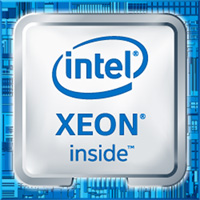No.1 Performance in Industry-standard SPEC Benchmarks
RS720Q-E9-RS8 supports two of the latest Intel Xeon Scalable Family processors, featuring 205W CPUs with 56 cores and 112 threads for leading performance. It also has 24 memory slots that fit up to 3TB of DDR4 2666 memory for intensive computing.
2U4N design with great scalability for compute-intensive workloads
RS720Q-E9-RS8 is the ideal server solution for compute-intensive workloads that require scalability, density and performance, including high-performance computing (HPC), data analytics, datacenter operations and private cloud applications. Featuring a modular 2U chassis containing four server nodes that handle twice the workload per rack unit, RS720Q-E9-RS8 delivers incredible performance with reduced space requirement and operating costs.
Robust native storage interface support
RS720Q-E9-RS8 natively supports eight SATA and SAS drives as well as up to eight direct-connected NVMe SSDs for high-speed data access. IT administrators can also add 2.5" HDDs or SSDs to the front hot-swap bays for even more storage.

Comprehensive IT infrastructure management solution
RS720Q-E9-RS8 features an embedded ASMB9-iKVM module and is bundled with ASUS Control Center software to provide comprehensive in-band and out-of-band management.
Learn more about ASUS Control Center >
High density and power efficiency and Intel Omni-Path Architecture support for HPC
Each node of RS720Q-E9-RS8 is engineered to run two of the latest Intel® Xeon® Scalable Family processors, featuring up to total 28 cores per processor and 165W power consumption. This 4-node server features 48 memory slots in total that fit up to 6TB of DDR4 2666 memory for intensive computing.
RS720Q-E9-RS8 supports optional Intel Omni-Path Architecture (up to 100Gbps) configurations for HPC environments.



Exclusive thermal radar technology for energy efficiency
RS720Q-E9-RS8 features a smart Thermal Radar design with more ambient thermal sensors for the CPU, memory, NVMe SSD, PSU and front-panel board that provide improved temperature monitoring and enable dynamic fan speed adjustment for better power efficiency. This smart thermal design reduces fan power consumption by up to 20% and eliminates the power-sharing board for improved efficiency and lower operation costs.

Simplified maintenance and management
Easy-to-swap nodes
With accessible computing nodes that each have their own power button, IT administrators can easily swap malfunctioning nodes without affecting the operation of other nodes.

Visible Q-Code
A visible Q-Code (port 80) LED display provides easy monitoring of the entire boot process, from power-on until the operating system loads.

Quick initialization guidance
Instant system initialization information and diagnostic results are available for efficient IT operation and easy troubleshooting.


